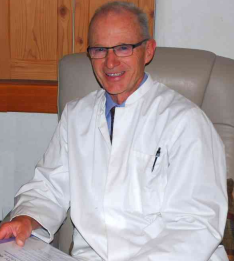I certainly thought that the stories about chelation therapy were a bit too good to be true and quackery was certainly on my mind when a physician friend of mine 10 years ago prompted me to register for the training course in the American College for Advancement in Medicine (ACAM). The ACAM organization has done most of the research and training in chelation therapy for the last 25 years. I found a group of about 1,000 highly motivated, physicians, internists, cardiologists and heart surgeons from all over the world who relied on things other than prescription drugs and hugely expensive and dangerous surgery.
This group, also through the American Board of Chelation Therapy (ABCT) of Chicago, certifies a physician as a diplomate of ABCT after having passed written and oral exams in addition to meeting other requirements. There are about 300 ABCT diplomate status physicians worldwide.
At the first training course I learned that it was an accidental discovery in the 1950's that patients who were treated for serious lead poisoning with EDTA chelation, reported substantial improvement in accompanying conditions such as circulatory (eg. angina) and inflammatory (eg. rheumatism) disorders. Physicians at that time were excited about those findings and active research into EDTA chelation for hardening of the arteries was pursued into the early 1960's but stopped after the patent protection on EDTA had run out. But the therapy called EDTA chelation would not die and by now it is estimated that about 500,000 Americans alone take this treatment every year.
How is this treatment supposed to work? The simplest and crudest analogy has been that chelation works on blood vessels like DRANO works on clogged pipes. I prefer to explain: the EDTA molecule acts as a magnet that will bind with toxic metals such as lead and cadmium (we all have too much of these stored away in brain and bones) but also with minerals such as calcium.
Once infused, the EDTA molecule is quickly excreted by the kidneys with toxic metals or minerals attached, whereas normally the body cannot excrete these toxins. For one thing, EDTA detoxifies you of heavy metals which frees up poisoned repair enzymes in the cells. EDTA chelation also removes calcium deposits from soft tissues (such as blood vessels), and this has been proven by the new technique of 'ultrafast cat scanning.' This likely explains the increased blood circulation that we see in our patients.
A fequently asked question is: Can this removal of calcium from soft tissues lead to thinning of the bones too? It does not have a negative effect on bones because EDTA stimulates the output of parathyroid hormone and this effect indirectly strengthens the bone.
Why is there so much opposition? When done by untrained practitioners, there could theoretically be kidney damage from the treatment (and it happened 30 years ago when the proper dosage formula had not been worked out). However, when done correctly, kidney function almost universally improves with just a few treatments. This is due to improved microcirculation in the kidney tissue. The opponents of chelation also say that there are no large scale double blind studies. That is correct but there are no such studies about angioplasty or bypass surgery either. There are however, over 2,000 positive articles on chelation in the world medical literature.
All this and more can easily be confirmed by reading books about chelation such as "Forty Something Forever" by Arline Brecher or "Bypassing Bypass" by Elmer Cranton.
I usually close my lectures with the old medical wisdom: "You are (only) as old as your blood vessels."
Please see "Other Benefits of Chelation."

